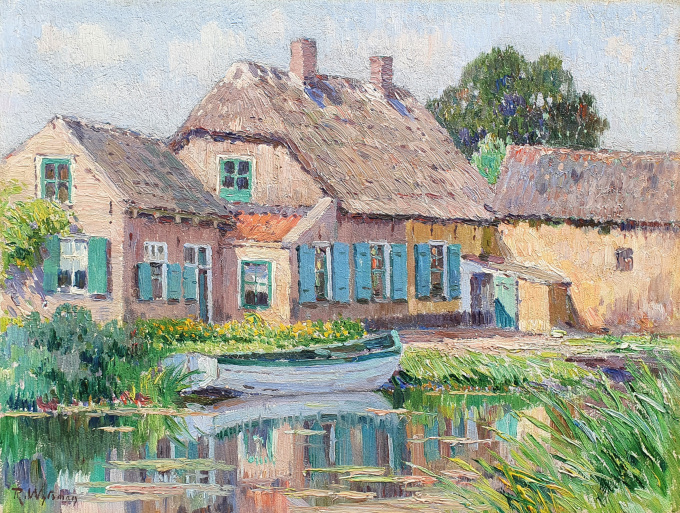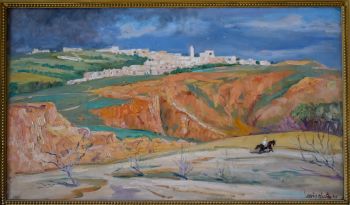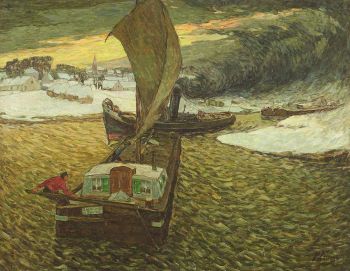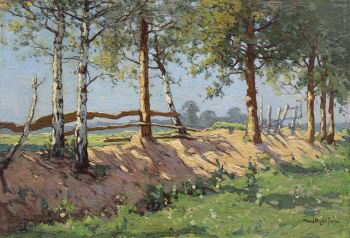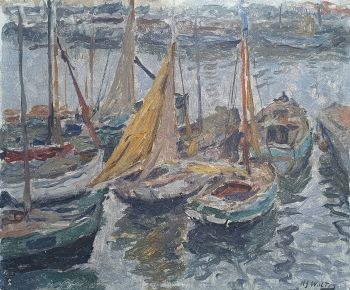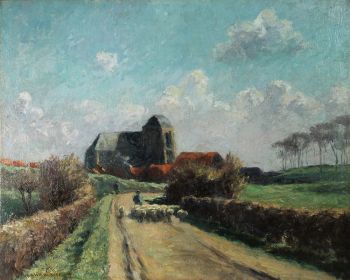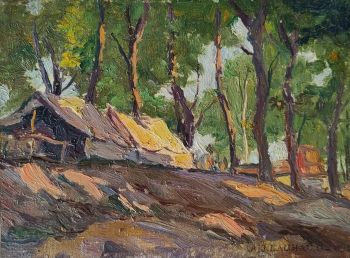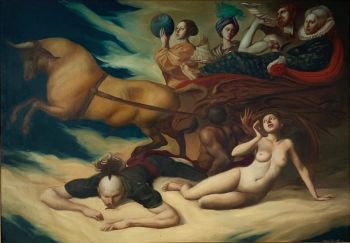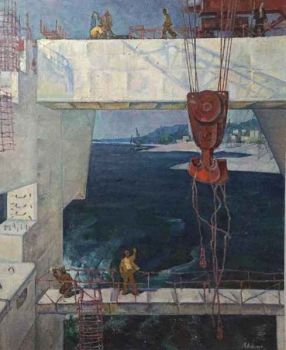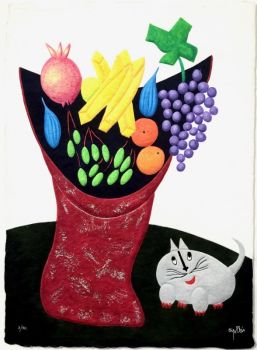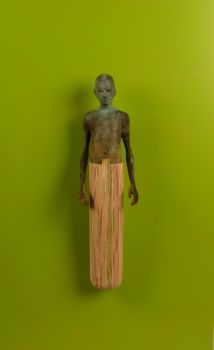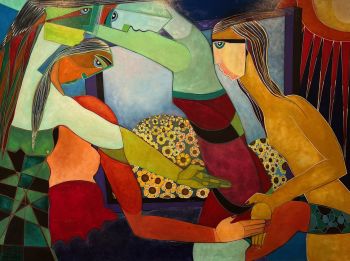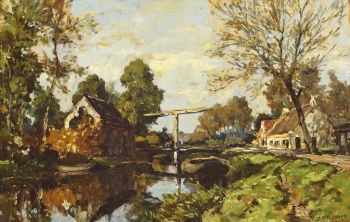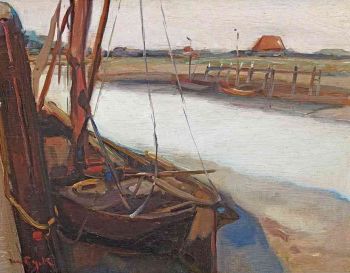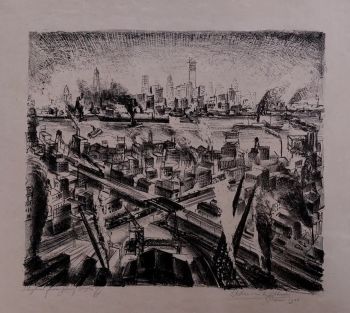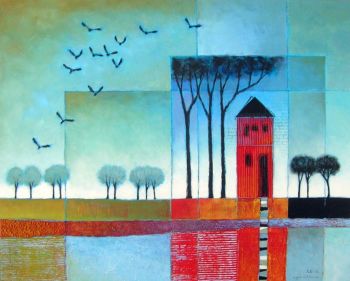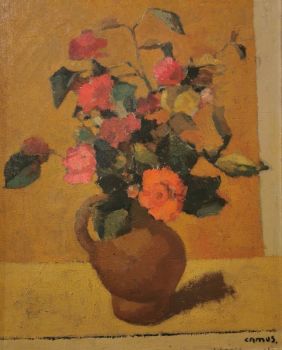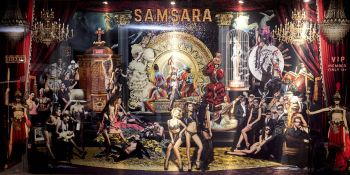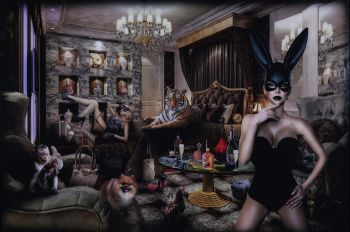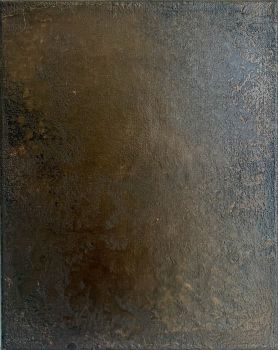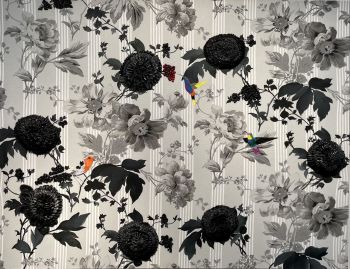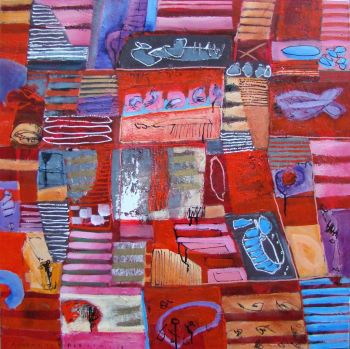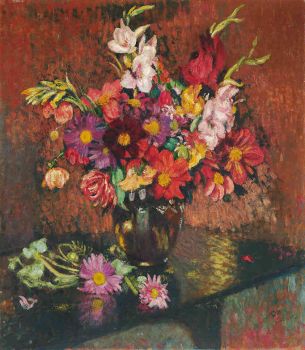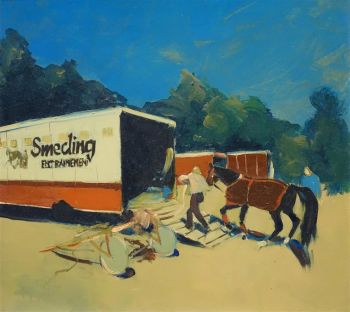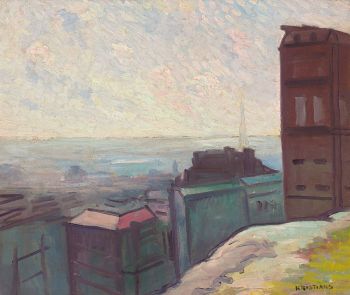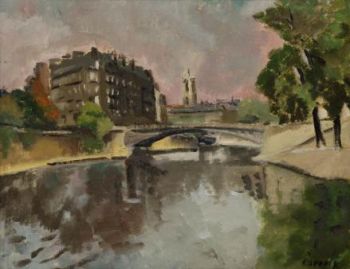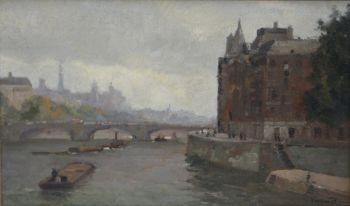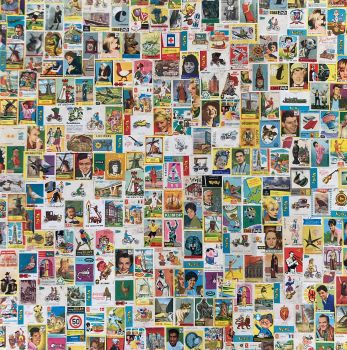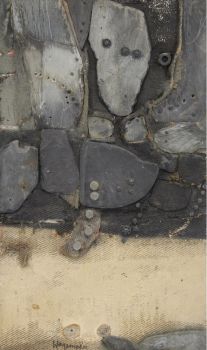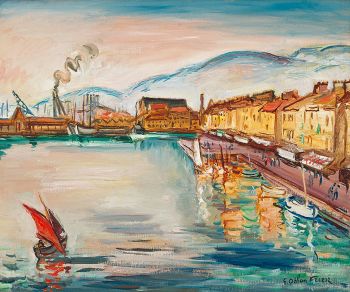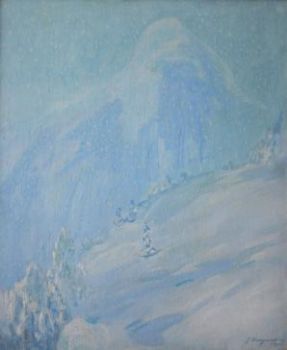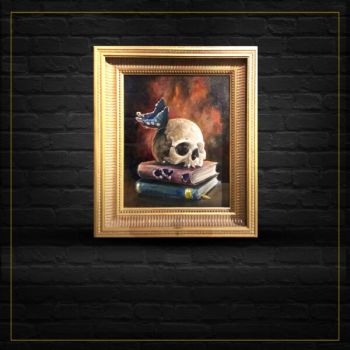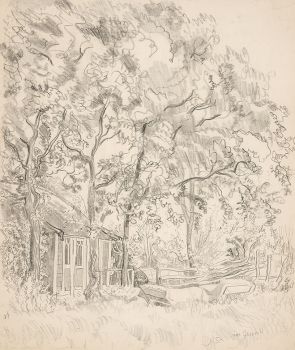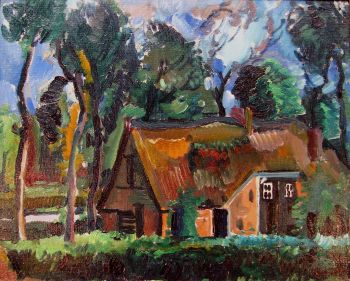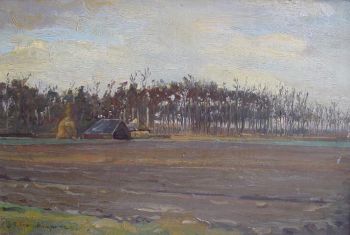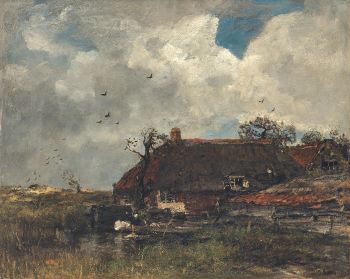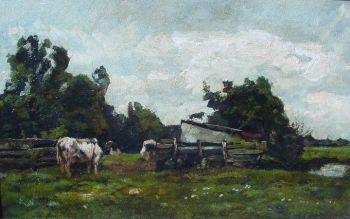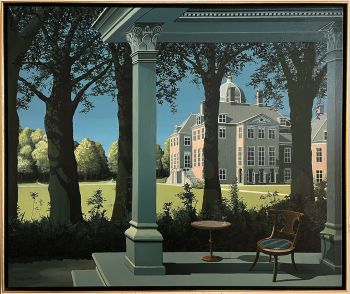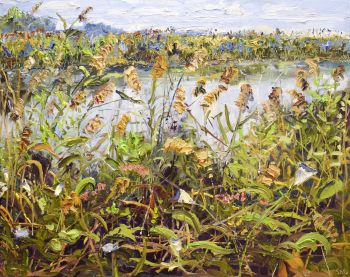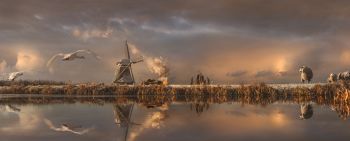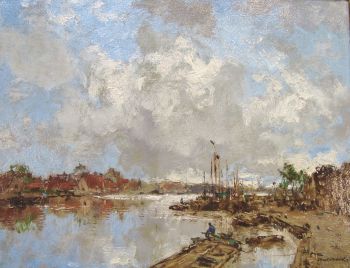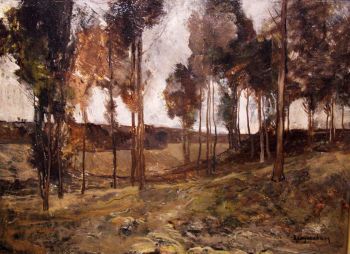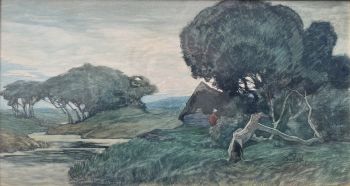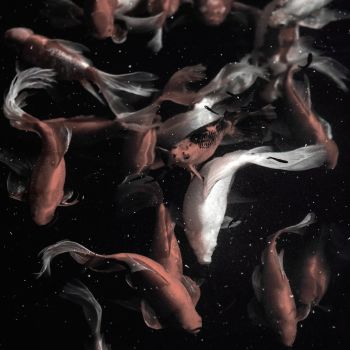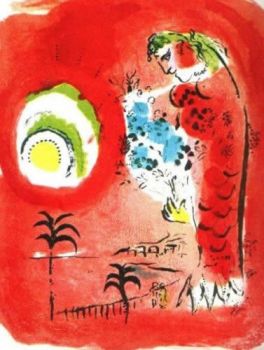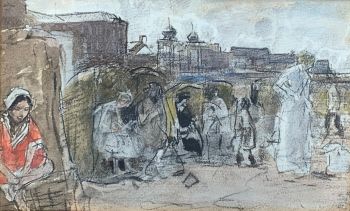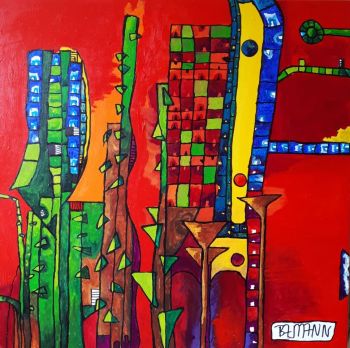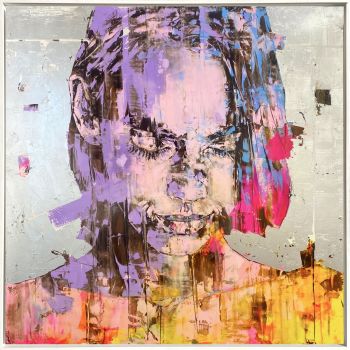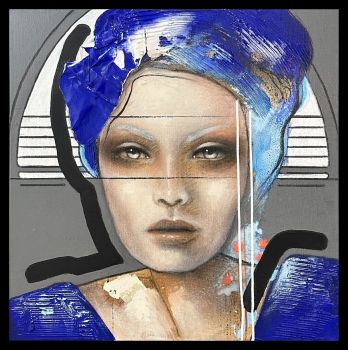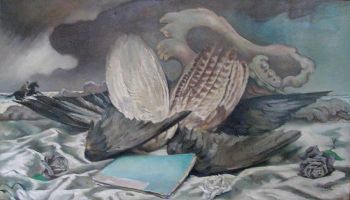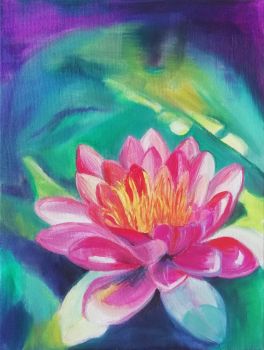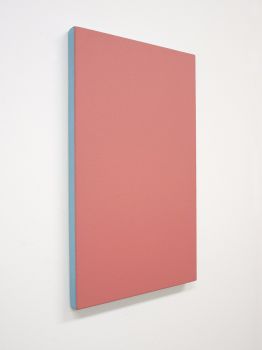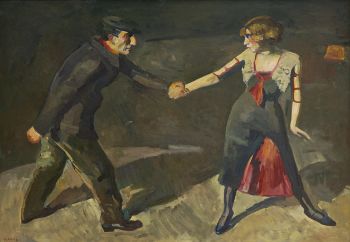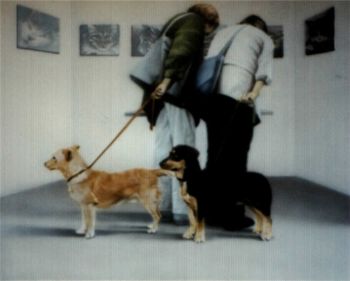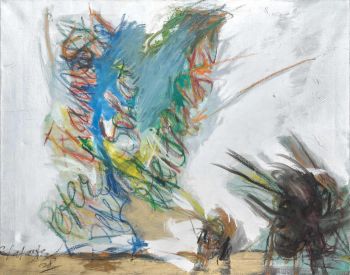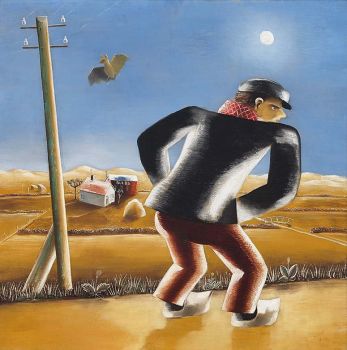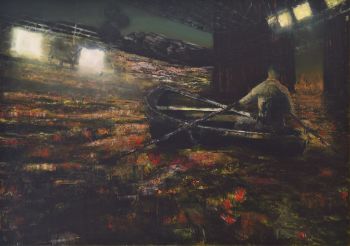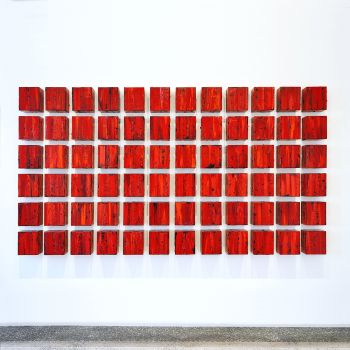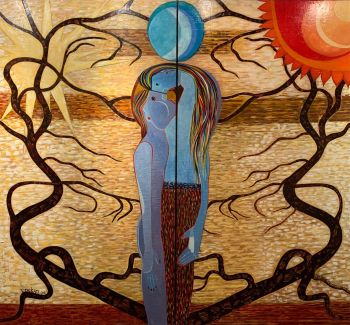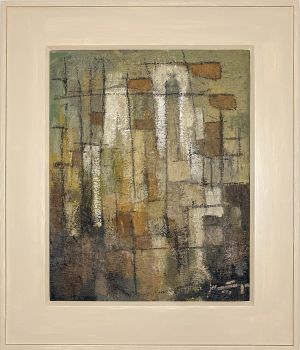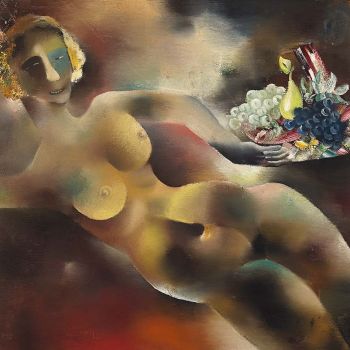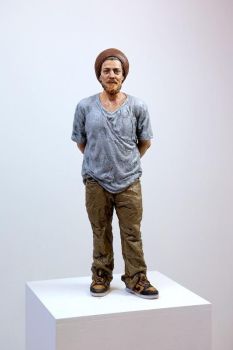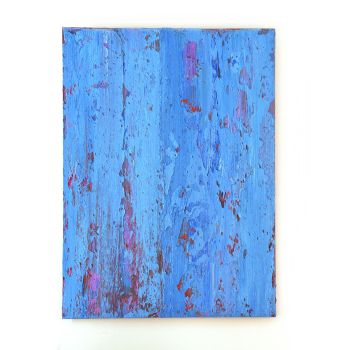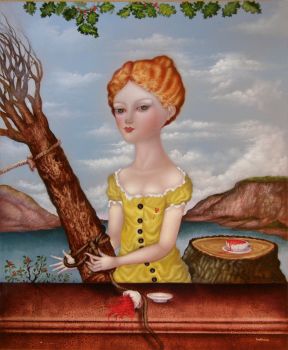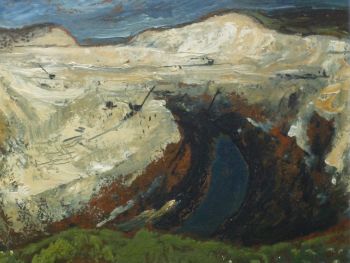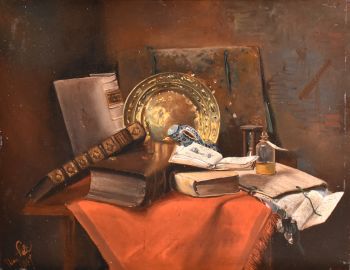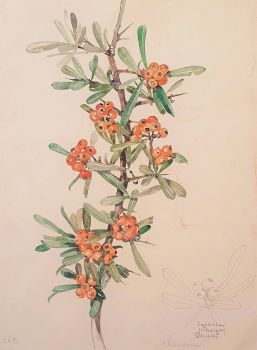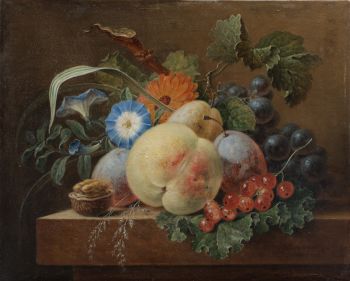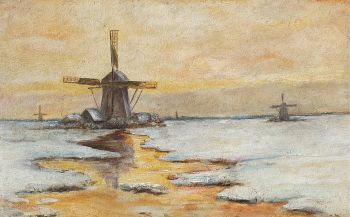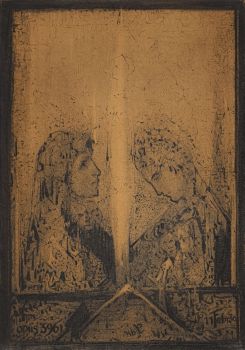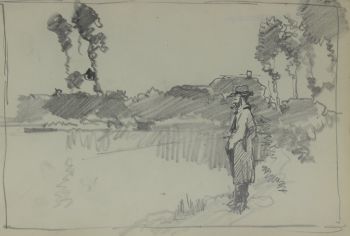Farm near Kralingen – Boerderij bij Kralingen 1916
Rodolphe Paul Wytsman
Pintura de aceitePanelPintura
27.10 ⨯ 36 cm
ConditionExcellent
€ 3.750
Klooster Fine Art
- Sobre la obra de arte[EN]
Rodolphe Wytsman (1860-1927) stayed in The Netherlands between 1914 and 1918, to escape the terrors of the First World War. Together with his wife, Juliette, Rodolphe was one of the central figures in the group of Belgian refugee artists. He continued painting, taking up some typically Dutch landscapes like this view on a farm near the village of Kralingen (near Rotterdam). His Luminist version of Impressionism shows here in the way he depicted the flowers in the garden, and the (reflection of) the row boat in the middle of the image. Throughout this painting he used a varying brushstroke, adapting shape, direction and the thickness of the paint layer to the effect he wanted to convey.
[NL]
Rodolphe Wytsman (1860-1927) verbleef tussen 1914 en 1918 in Nederland, om het strijdgeweld van de Eerste Wereldoorlog te ontvluchten. Samen met zijn vrouw, Juliette, was Rodolphe een van de spilfiguren in de groep gevluchte Belgische vluchtelingen. Hij bleef in Nederland schilderen en hij nam het Nederlands landschap tot onderwerp, zoals deze boerderij bij Kralingen (bij Rotterdam). Zijn luministische variant van het impressionisme komt naar voren in de verbeeldde bloemen in de tuin, en de roeiboot en reflectie midden in beeld. Door het hele schilderij gebruikte hij een gevarieerde penseelstreek, waarbij hij vorm, richting en dikte van de verflaag aanwendde om het beoogd effect te verkrijgen. - Sobre el artista
Rodolphe Paul Wytsman (1860, Dendermonde – Linkebeek, 1927), también escrito Rodolf Paul Wijtsman, fue un pintor belga.
Estudió con Jean Capeinick en la Academie voor Beeldende Kunst (Academia de Bellas Artes) de Gante. Posteriormente, estudió en la Académie Royale des Beaux-Arts (Real Academia de Bellas Artes) de Bruselas, donde entró en contacto con el círculo L’Essor, en el que participaban Henri Permeke, James Ensor y muchos otros artistas.
En 1883, fue miembro de Les Vingt durante un año. En 1986 se casó con Juliette Trulemans, que también era pintora. Los temas de Wytsman son pinturas de género, paisajes y vistas de la ciudad.
Wytsman trabaja en un estilo luminista y neoimpresionista. Expuso en los salones de Bruselas, Amberes y Gante. Sus obras se encuentran en numerosos museos de Bélgica y del extranjero, en Amsterdam, Amberes, Bruselas, Buenos Aires, Tokio, etc.
Vivió y trabajó en muchos lugares, en Italia (1882-1883), Knokke, La Hulpe, Linkebeek (1892-1927). Durante la Primera Guerra Mundial, Wytsman vivió en los Países Bajos.
¿Está interesado en comprar esta obra de arte?
Artwork details
Related artworks
Egbert Rubertus Derk Schaap
GEZICHT OP KORTENHOEF1862 - 1939
Precio a consultarGalerie Het Noorderlicht
1 - 4 / 24Herman Bogman jr.
Le Pont au Change et Le Conciergerie in Paris 1935 - 1945
Precio a consultarAdelwein Kunst
1 - 4 / 24Jean-François Rauzier
Veduta Amsterdam 2 - Limited edition of 82015
Precio a consultarVilla del Arte Galleries
Jean-François Rauzier
Balade D'Amsterdam 2 - Limited edition of 2 2015
Precio a consultarVilla del Arte Galleries
Willem van Konijnenburg
Landscape in Limburg, the south of the Netherlands1868 - 1943
Precio a consultarKunsthandel Pygmalion
Herbert Fiedler
Stadsgezicht bij avond/ Café du tabac, Parijs1931
Precio a consultarStudio 2000 Art Gallery
1 - 4 / 24- 1 - 4 / 24
- 1 - 4 / 12

